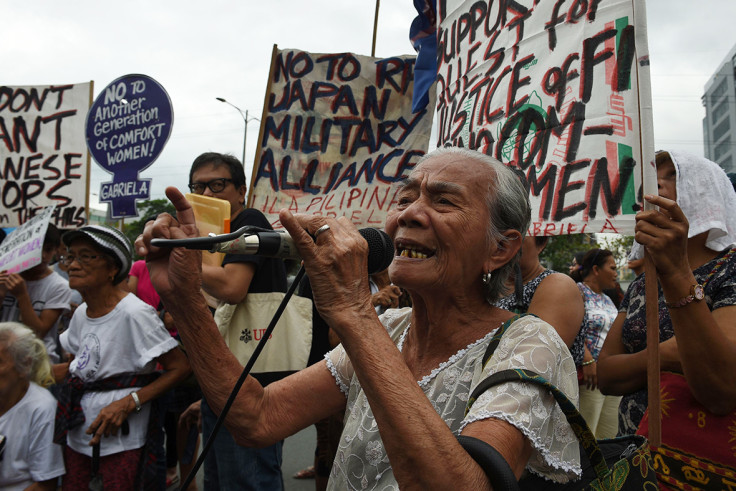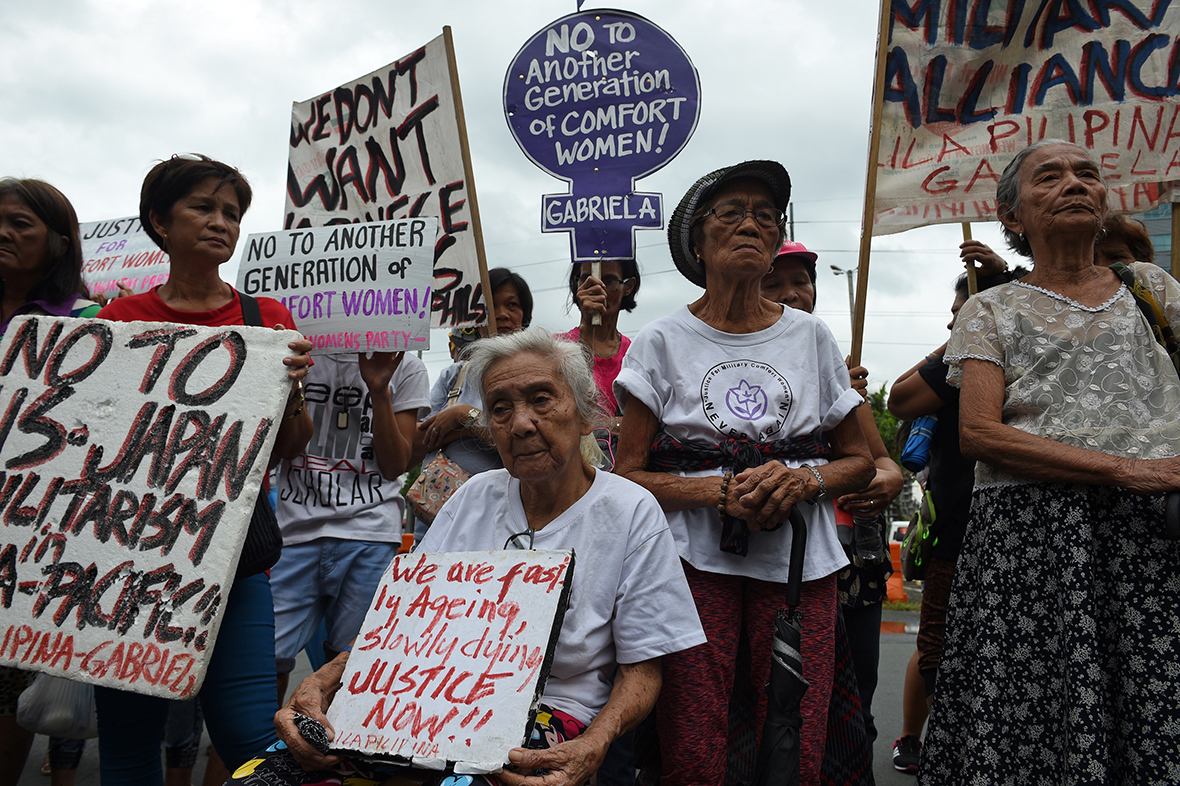Former comfort women urge President Duterte to champion their plight in meeting with Japanese PM
Japan is the biggest provider of aid towards the Philippines and its most important trade partner.

Japanese Prime Minister Shinzo Abe became the first foreign head of state to visit the Philippines since the election of President Rodrigo Duterte. But the celebratory note of the meeting was shadowed by a protest outside the Japanese embassy staged by former victims of sex trafficking during the Japanese occupation.
The elderly women held banners outside the embassy in Manila on 12 January, ahead of Abe's visit, urging President Duterte to discuss the plight of the so-called "comfort women" during the two-day visit of the Japanese head of state.
Rechilda Extremadura, executive director of Lila Pilipina organisation representing comfort women, said they want a formal apology from the Japanese government to all Asian comfort women, and restitution for the hurt inflicted upon thousands of women. "Our lolas [the Filipino word for grandmothers] also want Duterte to resist renewing the possibilities of letting new Japanese troops conduct exercises, train local security forces, and make bases in our country to avoid another brutal campaign of war and pillage," she said, as quoted by Chinese news agency Xinhua.
Another women's organisation, Gabriela, joined the protests, warning President Duterte from trading justice and recognition for comfort women in exchange of aid and loans.
Prime Minister Abe pledged a ¥1tn ($8.8bn, £7.2bn) aid package to the Philippines during his visit, including government aid and private investments in the infrastructure sector over the next five years, the Japan Times reported. Japan is the biggest provider of aid towards the Philippines and its most important trade partner. High on the leaders' agenda is also maritime security in light on the Chinese military build-up in the South China Sea.
"Japan has really been our biggest helper," Duterte said on a visit to Tokyo last October when he met Abe, as reported by AFP.
Filipino organisations championing the cause of the comfort women have documented that 174 former victims have gone public since the early 1990s. Only 70 are still alive. Survivors demand an official apology, just compensation, and inclusion of the comfort women issue in Japan's historical accounts and textbooks.




More than 200,000 women from various Asian countries were enslaved by the Japanese Imperial Military from the early 1930s until the end of WWII. In countries such as South Korea and Taiwan survivors are seeking reparations for the crimes suffered.
Japan and South Korea signed a deal in 2015 detailing reparations to women forced into sexual slavery. The agreement is highly controversial, as opposition politicians and women's organisations say the Koreans settled for too little, and Japan should admit legal responsibility for the war crime.
In December, hundreds of protesters gathered around a statue of a girl representing South Korean sexual slavery victims near the Japanese embassy building in Seoul, a symbolic location as Japan wants the memorial removed on 28 December. In Busan, protesters set up a similar statue in front of the Japanese Consulate, which the police had to remove with a forklift as protesters staged a sit-in to defend the memorial. A Buddhist monk, who set himself on fire during a protest in January against the sex slaves' deal died on Monday night (9 January).
Who were the 'comfort women'?
More than 200,000 women were enslaved by the Japanese Imperial Military in occupied territories from the early 1930s to the end of the Second World War. The majority of them were teenagers, many as young as 12. The women enslaved were Korean, Chinese, Taiwanese, Malaysian, Indonesian, Dutch, East Timorese and Japanese. Amnesty International say women from Thailand, Vietnam, Burma and the United States were also enslaved.
Women who lived under the Imperial Japanese rule, responded to "work placements", apparently available in factories, hospitals and restaurants, unaware that they were being trafficked into sexual slavery. Once "recruited", they were transferred to comfort stations in both their nation and overseas. Many young girls were sold off by desperate parents, while other reports, revealed decades later, state that some were abducted from their homes.
© Copyright IBTimes 2025. All rights reserved.






















